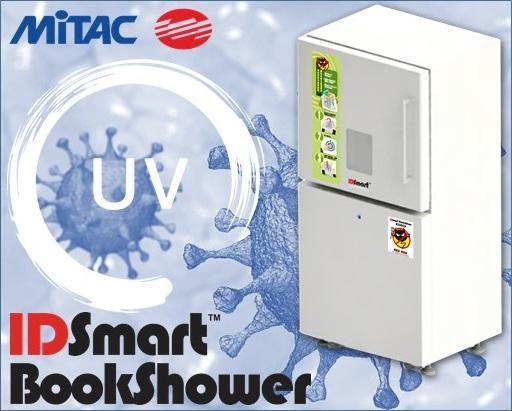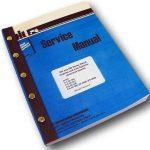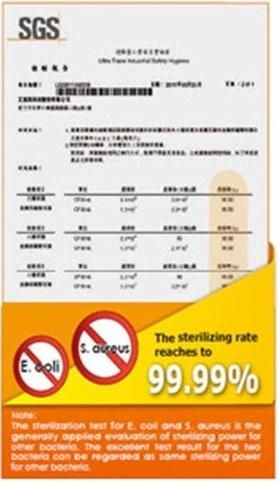MiTAC IDSmart Sterilizer
Disinfection of Documents, Files, Records, Books, Notebooks and much more for a safe reading experience & usage
IDSmart Sterilizer
Disinfection
The ongoing COVID-19 pandemic has changed the way people live and work as no one would ever imagine. There is a worry about the contamination that might be present on borrowed objects and the risk of spreading the virus.
For many years, germicidal Ultraviolet “UVC” helped stop the spread of numerous pathogens. Disinfecting frequently used surfaces is extremely important, and Ultraviolet UVC light is very effective at inactivating pathogens like viruses and bacteria.
IDSmart Sterilizer is designed to eliminate fungi, bacteria and virus that threaten the health through UV germicidal irradiation. It is aimed to create a comfortable and safe reading experience by disinfecting the inside and outside of bonded materials.

IDSmart Sterilizer
What Do We Sterilizer
Don’t get fooled with the name “BookShower” as there is no liquid involved.
Just UVC rays and strong airflow to clean your documents, incoming mail, files, medical records, manuals, newspapers, magazines, digital readers, books, keyboards, mouse, tablets & notebooks.

Old & New Books

Schools Notebooks & Stationary

Medical Records

Business Studies & Manuals

Notebooks & Tablets

Incoming Mail
Certifications
MiTAC IDSmart Sterilizer has been certified by FCC, CE, SGS and ISO, ensuring it complies with global electricity and safety standards and has acquired 99.9% disinfection test reports.

Features:
UV Lamp: It disinfects various with 253.7nm of wavelength which displays the highest sterilizing capacity among UV-C rays.
60 Seconds: BookShower takes 60 sec before or after reading, and the sterilized records can be used immediately.
Air Blower: Remove dust from bonded documents by the wind of air blower, maintaining opening of documents to ensure that UV light can reach to inner pages.
Electrostatic Air Filter: It displays excellent collection capability for finer dusts and it minimized the generation of electromagnetic waves.
Non-Toxic: No chemicals or other harmful substances are used making it safe to the human body and does not damage documents.
Natural Aroma: Optionally It able to enhance the sterilization effect and adds pleasure to reading with a delicate scent.
UV Lamp
Electrostatic Air Filter
60 Seconds
Non-Toxic
Air Blower
Natural Aroma
IDSmart BookShower
UltraViolet “UV”
What is UV light?
Ultraviolet (UV) light is a component of the electromagnetic spectrum that falls in the region between visible light and X-Rays. This invisible radiation includes the wavelength range of 100 nm to 400 nm. UV light can be further subdivided and categorized into four separate regions:
- 100 nm to 200 nm: Far UV or vacuum UV (only propagate in a vacuum)
- 200 nm to 280 nm: UVC – useful for disinfection and sensing
- 280 nm to 315 nm: UVB – useful for curing, and medical applications
- 315 nm to 400 nm: UVA (or “near UV”) – useful for printing, curing, lithography, sensing & medical applications
How much UV?
The degree of inactivation by ultraviolet radiation is directly related to the UV does applied to the object. The dosage, a product of UV light intensity and exposure time, is usually measured in microjoules per square centimeter, or equivalently as microwatt seconds per square centimeter (μW.s/cm2). Dosage for a 90% kill of most bacteria and viruses from 2,000 to 8,000 μW.s/cm2.
Why use UVC light to Disinfect?
UVC wavelengths are between 200 and 280 nanometers, making them germicidal – meaning they are capable of inactivating microorganisms, such as bacteria, viruses and protozoa. This quality makes UVC energy an effective, environmentally-friendly and chemical-free way to prevent microorganisms from replicating in any environment, but especially in hospitals.
How does UVC Destroy Germs?
The high energy from short wavelength UVC light is absorbed in the cellular RNA and DNA, damaging nucleic acids and preventing microorganisms from infecting and reproducing. This absorption of UVC energy forms new bonds between nucleotides, creating double bonds or “dimers.” Dimerization of molecules, particularly thymine, is the most common type of damage incurred by UVC light in microorganisms. Formation of thymine dimers in the DNA of bacteria and viruses prevents replication and ability to infect.
Ready to get started ?
We're Here To Help!
Office
7447 182 St. NW, Edmonton, AB, T5T2G8 Canada
Hours
S-S: Closed
Call Us
(800) 775-8993
